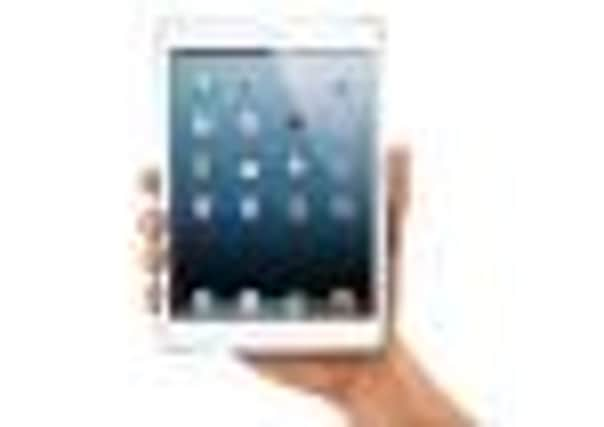Tech Talk: The tablets for today


The world now has more tablets than at any time since Moses. Last week’s launch of the iPad Mini kicked off a merchandising frenzy that will see more of us than ever switching to these devices from our older and slower netbooks and laptops.
This is no bad thing, because tablets are as good as or better than laptops for all the day-to-day computing tasks: browsing the web, sending emails, checking your Facebook page, and so on. They’re also fine for writing documents, especially if you add an external keyboard.
But which tablet is best? Here’s how they stack up...
Advertisement
Hide AdAdvertisement
Hide AdThe latest version of Apple’s market leader, the Apple iPad 4, launched a mere six months after its predecessor, boasts a 9.7-inch screen and an upgraded camera and processor. There is a huge library of apps available – many free but most not – and you have the option of 3G and 4G mobile connectivity on the move. Prices start at £500 with 3G and £400 without.
The iPad 2, all of 18 months old but positively an antique by Apple’s standards, also has a 9.7-inch screen but a lower resolution – though I couldn’t tell them apart, side by side. At £430 with 3G and £330 without, this is arguably a better buy.
The newest iPad, the Mini, has a 7.9-inch screen but is in other respects similar to its bigger sibling.
It runs all the same apps and costs £370 with 3G and £270 without (more for models with extra storage).
Advertisement
Hide AdAdvertisement
Hide AdApple’s biggest rival is the 7-inch Google Nexus, which is marginally smaller than the iPad Mini but boasts a higher resolution screen. It runs Google’s Android operating system for which thousands of apps are available, but there is no 3G option; it’s wi-fi only. It costs £160 for an 8gb version, with a £200 32gb model on the way. If it’s movies you like, this plays more formats than the iPad.
Amazon’s Kindle Fire and Kindle Fire HD is your cheapest option, with prices starting at £130 for an 8gb model. Like the Nexus, there’s a 7-inch screen and no 3G. But Amazon sees these Kindles as shop fronts for its library of e-books and rental movies, rather than general purpose internet devices.
You can still browse the web but not all apps are compatible.
There are also tablets from Samsung and Acer, plus a slew of cheap no-name brands from China – but for performance and value Google and Amazon have overtaken them all.